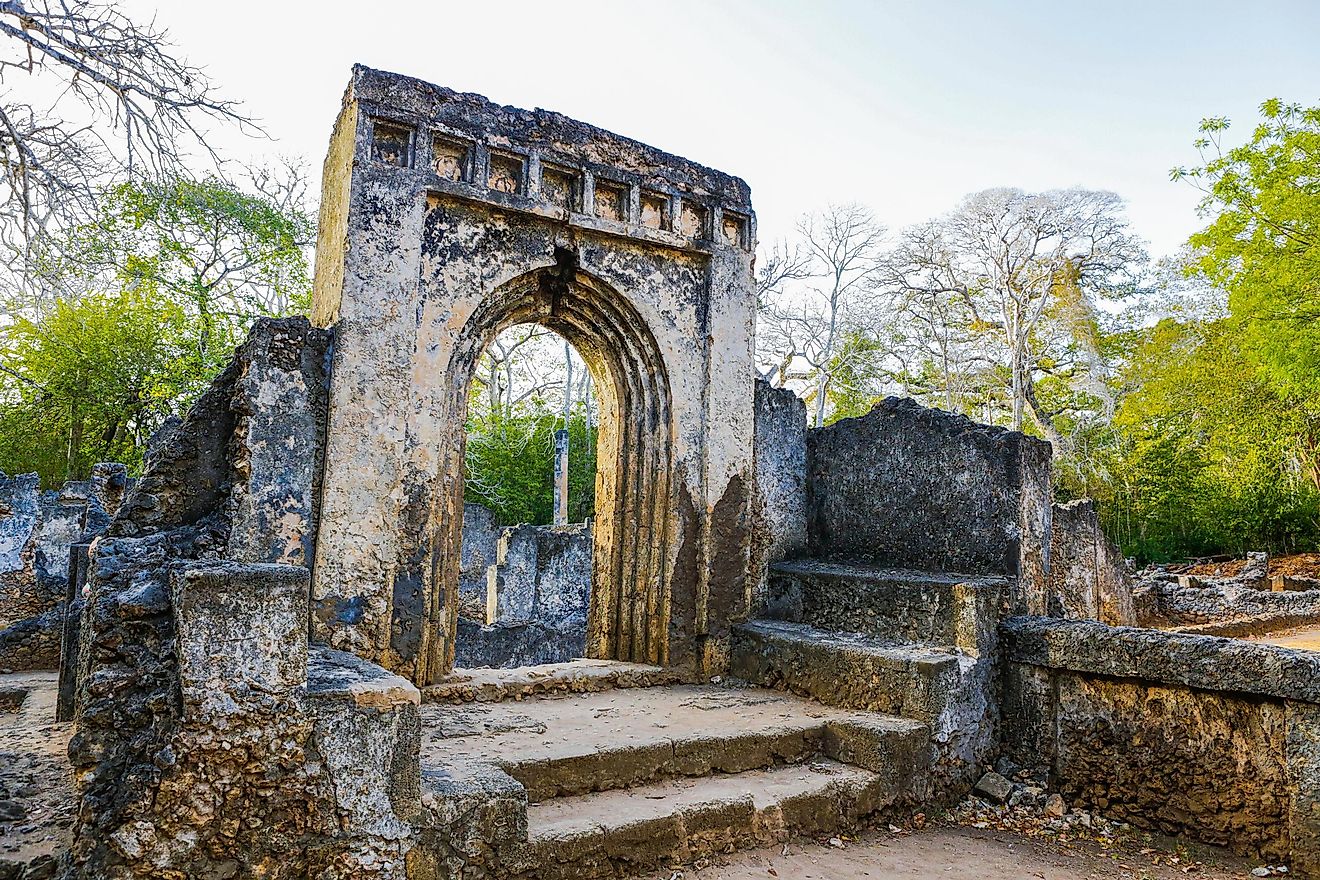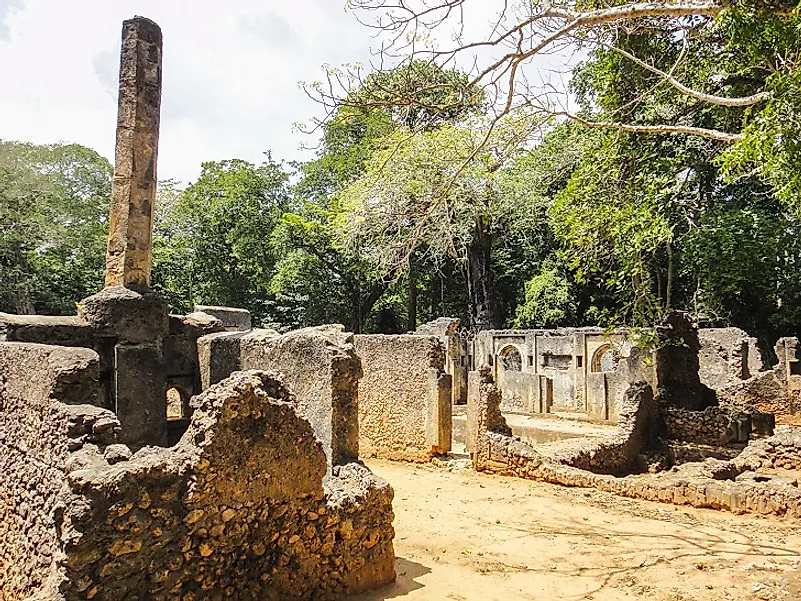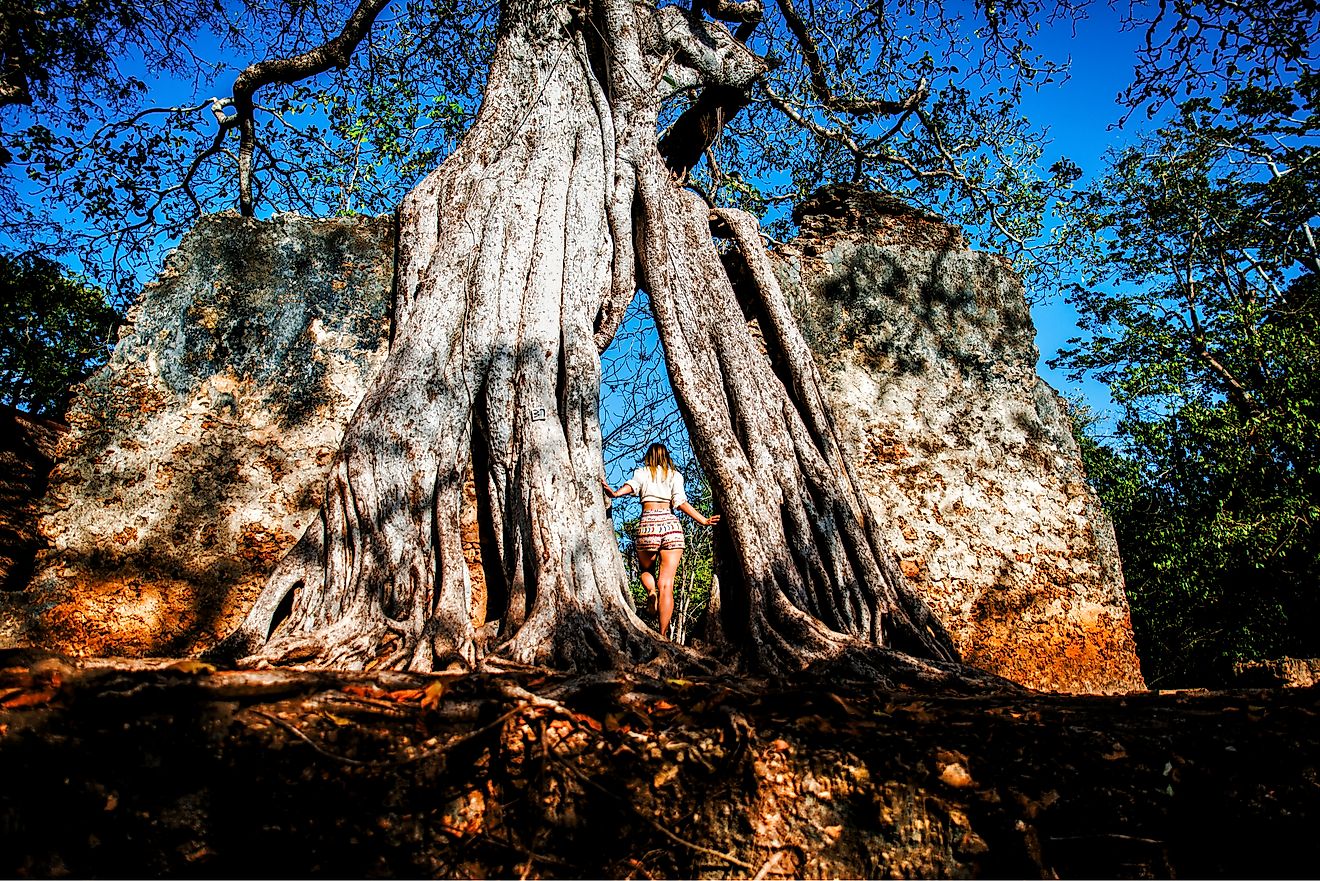The Ancient Gedi Ruins Of Kenya

The Gedi ruins reveal a completely different and less known history of Africa. While it is a common belief that Africa was a country of wild tribes practicing a primitive lifestyle prior to the colonization of the continent by the Europeans, the ruins of Gedi prove otherwise. Located in Kenya’s Kilifi Country, on the shores of the Indian Ocean, buried in the lush, green forests of the country, archaeologists have discovered ruins of a 13th Century town that appeared quite well advanced for its time. The residents of Gedi enjoyed inhabiting coral brick houses with supplies of running water and flushing toilets. The recovery of artifacts like Chinese vases and Venetian glasses from the ruins proves the fact that the citizens of Gedi had strong contacts with the outside world and had established trade relations with global cultures.
Unique Ruins

The Gedi ruins spread over a large area of land with the historic town encompassing two walls around it. It is believed that the rich people of the town lived within the safe confines of the inner wall, the middle class lived within the boundaries of the outer wall while the peasants and other less economically powerful communities lived outside the walls of the town. The town also encompasses a mosque, a fort, palaces and tombs built using the Swahili style of architecture. The buildings are constructed primarily of plaster, earth and corals. A 50 meters deep well near the mosque, known popularly as the "Well of the Great Mosque" is impressive in its design and was probably used for ceremonial baths. Near the 15th Century palace, there are several chambers that can only be accessed by trap doors in the roof and were probably used to store the wealth of the riches.
Modern Significance
Today, the ruins of Gedi bear testimony to the life and culture of people of 13th Century Africa. It provides an insight into the economy, architecture, ways of life, social structure and other aspects of ancient African civilizations. Gedi’s history and architecture appears to be intertwined with that of other Swahili states of Africa of its time like the Songo Mnara and Kilwa Kisiwani of Tanzania. The extreme significance of Gedi has led to the placement of this historical site in the tentative list for consideration as a UNESCO World Heritage Site. The ruins are also visited by tourists, photographers and historians who aim to explore, experience and learn about life in ancient Africa.
Regional Habitats and Biodiversity

The ruins of Gedi is not only significant for its cultural history but it is also a natural treasure hosting at least 50 species of indigenous plants within its boundaries. The entire area is covered by a deciduous forest type of vegetation which is supported by the high volume of rainfall of 1,100 millimeters per year in the area. Gyrocarpus americanus and Sterculia appendiculata are two of the common plant species growing in this habitat. Those visiting the Gedi ruins are also provided the opportunity to experience the local wildlife of the region which includes monkeys, duiker antelopes, golden-rumped elephant shrew, and galagos.
Threats and Conservation
The Gedi ruins are currently part of a protected national park in Kenya. There is immense need to conserve these ruins and its surrounding ecosystem not only because of its archaeological and historical significance but also because the site offers an important source of income to the locals of the region from the tourists visiting the place to observe the ruins.











